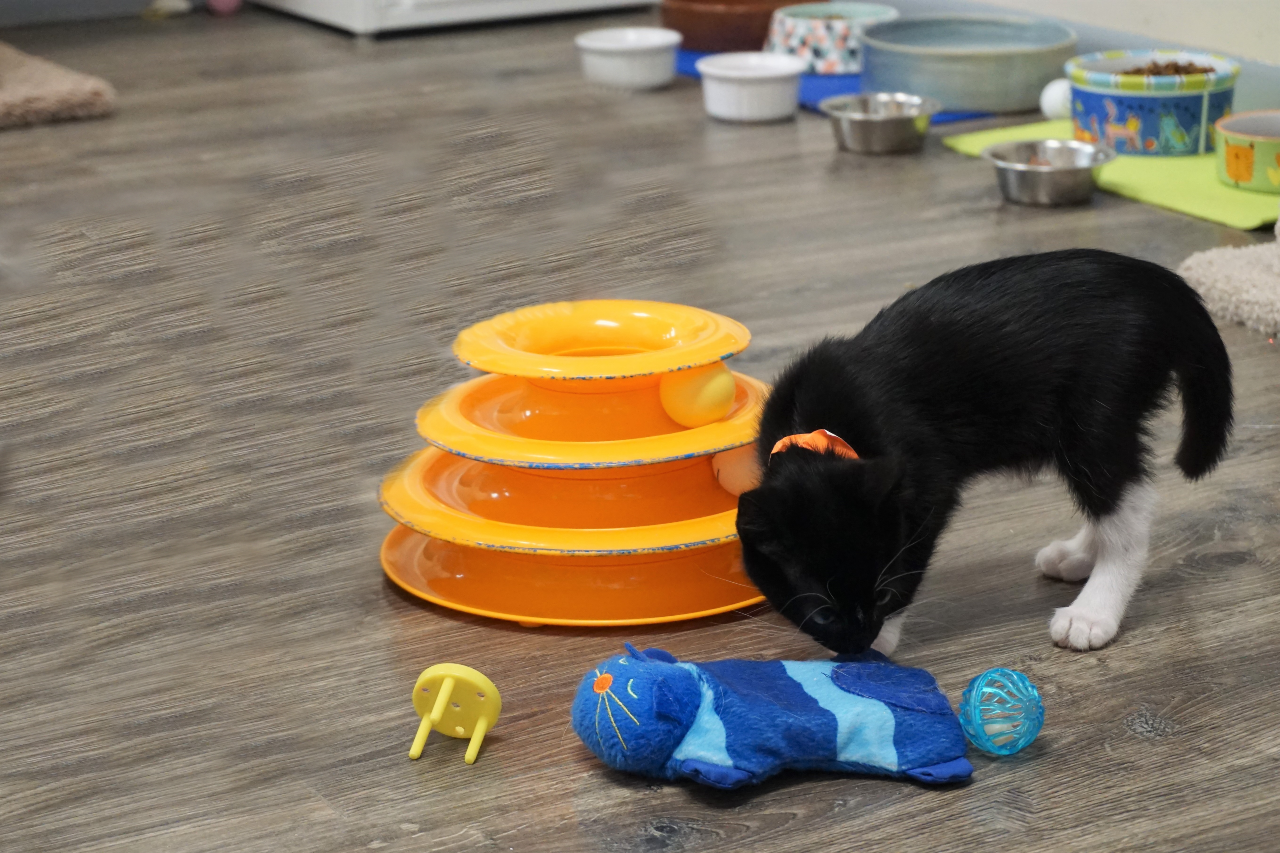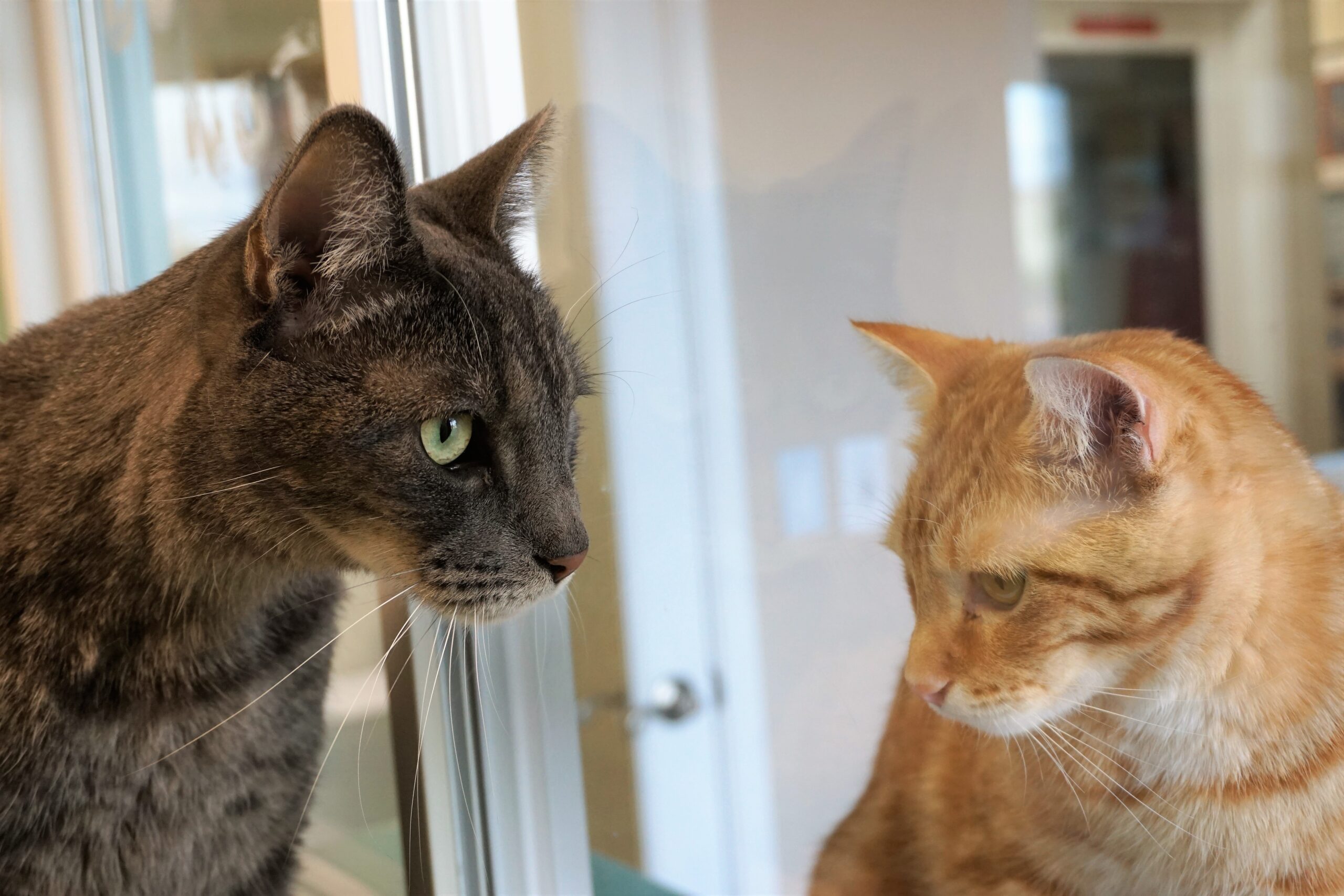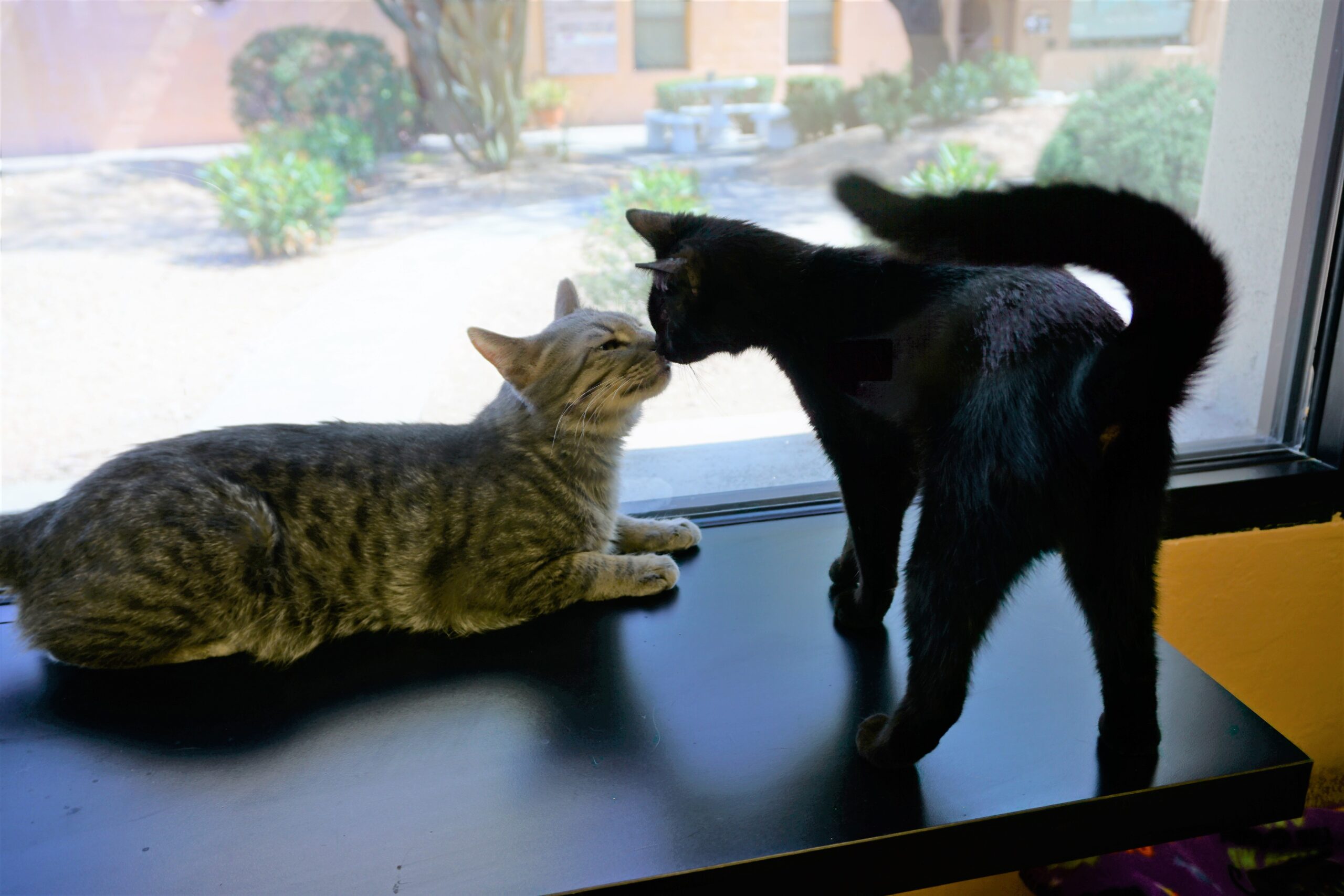INTRODUCING ADULT KITTIES 101
Cats are like potato chips…you can’t have just one

Keep Your Kitties
Separated at First
Separated at First
Choose an isolation room – a bathroom or bedroom. This room should have all the necessities (litter box, food bowl, water bowl, bed, toys, etc) that the new kitty will need. The kitties should be able to smell and hear each other from their opposite rooms. You can start feeding the kitties on the opposite sides of the doors. This will help associate the smell and sound of each other with a positive experience.
After three or four days, switch the kitties’ locations (switching rooms) so they can get more acquainted and used to each other’s smell.
After a few more days, start playing with each of the kitties near the door, helping build up more positive associations with the scents of each other.

Slowly Let the Kitties
See Each Other
If your kitties are not hissing or growling at each other from the opposite side of the doors, after about a week or so, you can try visually introducing the kitties. You can do this by using a screen door, a pet gate, or a baby gate that they can’t jump over. It’s best if there are two humans to help at this stage of introducing. Feed the kitties in eyeshot of each other on the opposite sides of the screen/gate and gradually move the feedings closer to the screen/gate (as long as there is no aggression). The same with playtime and moving it closer to the screen/gate. Let the kitties determine how close you move their food bowls to the screen/gate. It may start off with 10 or more feed away.

Make the Face-to-Face
Introduction
Introduction
The final step is to let your kitties be together, face to face, for supervised interaction. It’s a good thing to have another human to help with this process. They may hiss or just ignore each other. It will take some time for them to know they can be friends and not foes. Let the kitties make their own pace. It takes time and patience. You will sense about how long it will take for them to become companions.
